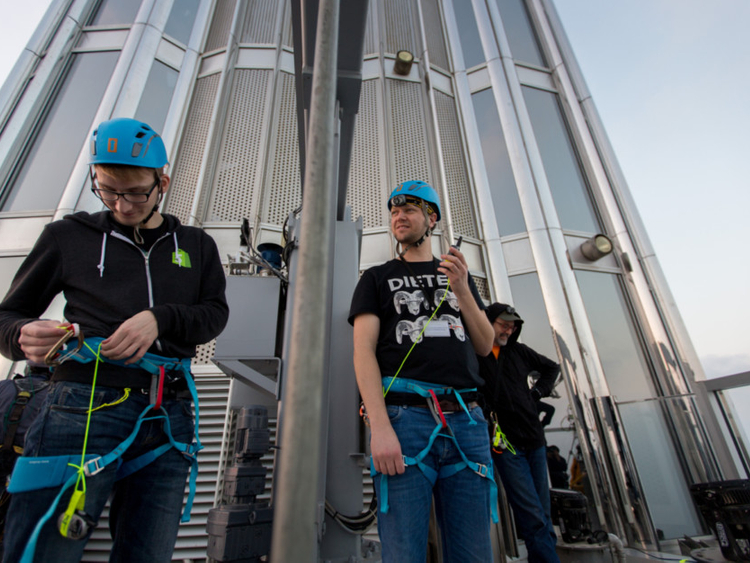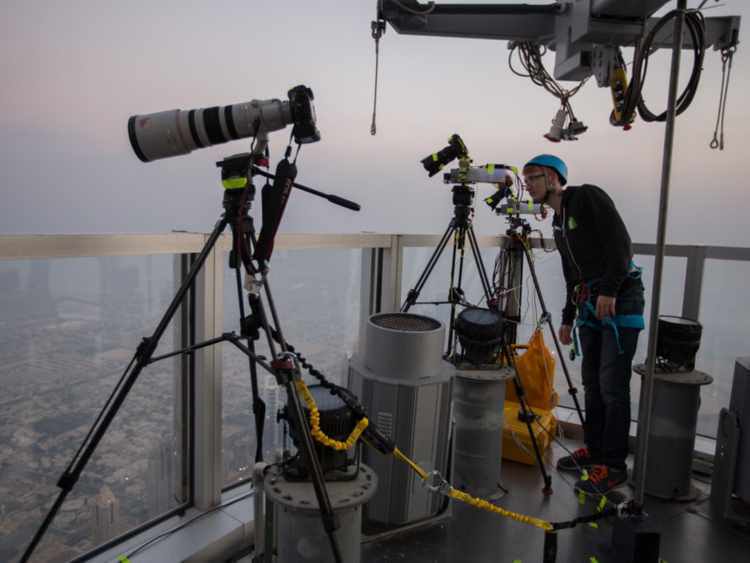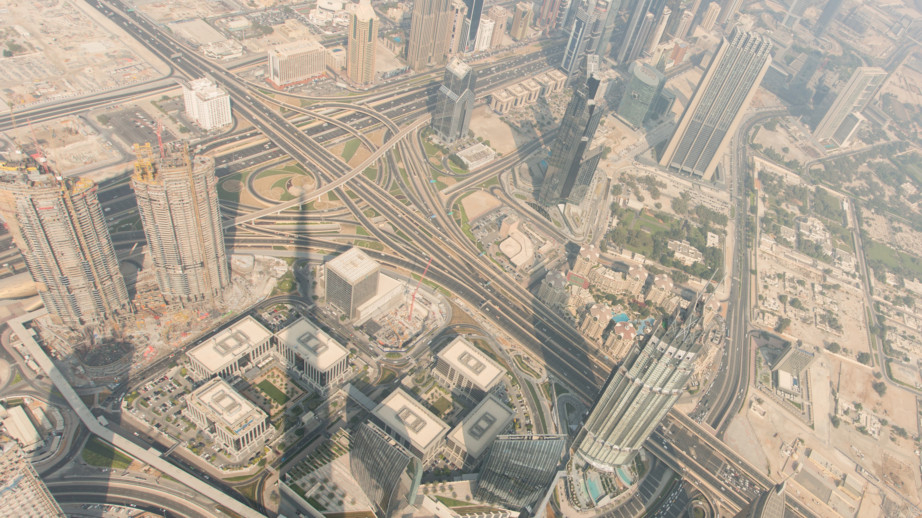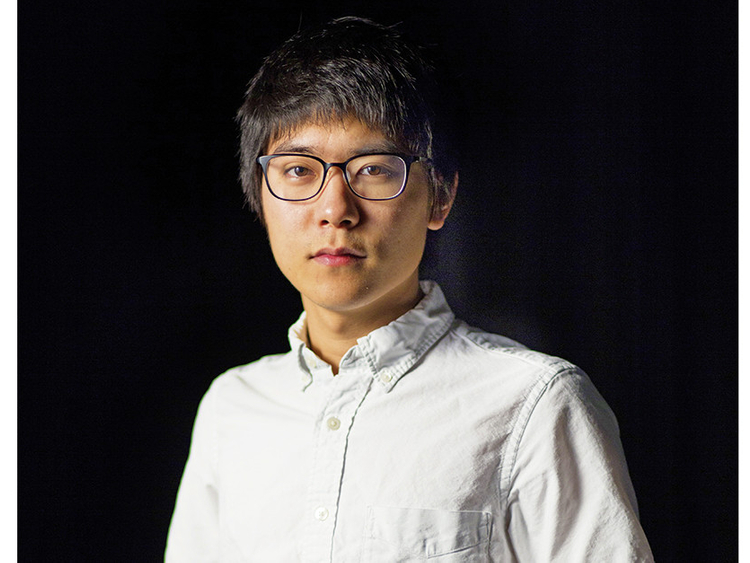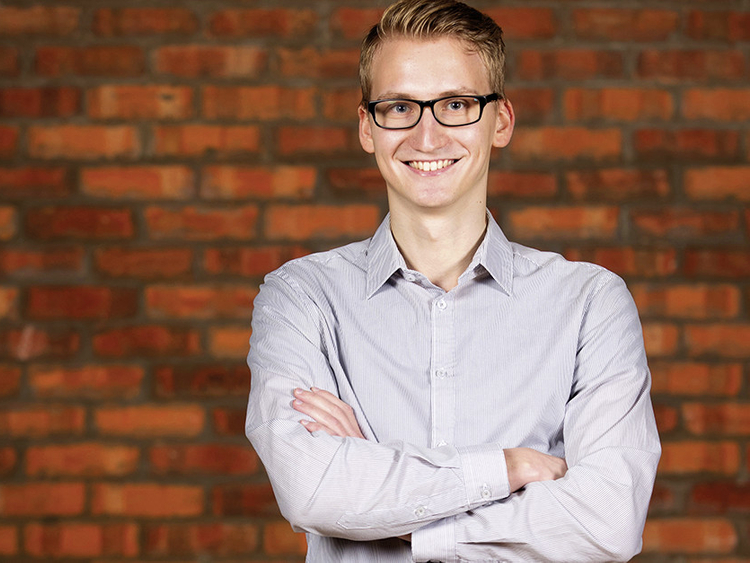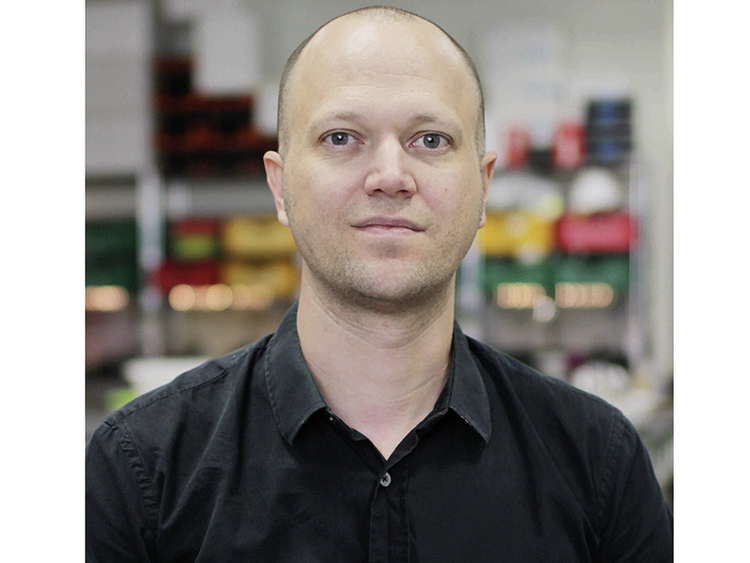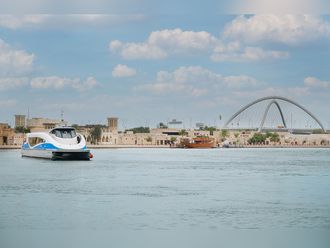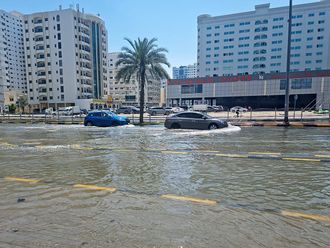
Abu Dhabi Students of NYU Abu Dhabi have scaled new heights by using the Burj Khalifa as a tool for scientific enquiry to track its imposing shadow and study the rotation of the Earth.
Providing details of the high-profile project, Matthew Karau, faculty adviser and lecturer of engineering design at NYU Abu Dhabi, told XPRESS, “The Burj Shadow project is an international collaboration whose first outcome is a time-lapse video revealing the rotation of the Earth by tracking Burj Khalifa’s shadow. This will be unveiled at the Global Grad Show on November 14 as part of the Dubai Design Week 2017.”
He said those who have worked on the Burj Shadow project include Class of 2017 NYU Abu Dhabi students Vasily Rudchenko and Koh Terai, NYU Abu Dhabi assistant professor of Visual Arts Goffredo Pucceti and PSL Research University senior researcher Roberto Casati, besides himself.
Karau said, “Students from NYU Abu Dhabi designed and produced custom hardware and software to capture raw footage and produce the final video. Using a simple approach of aligning the shadow vertically throughout the video, the Earth appears to rotate beneath the shadow, revealing a fundamental pattern of the Earth’s motion in space.”
Custom-made
The film, which essentially follows the rotation of the world’s longest shadow cast by a man-made structure, was recorded from 700 metres up on the Burj Khalifa, using a custom-made rotation rig that followed the rotation of the building’s shadow from sunrise to sunset. A DSLR took a photo every 20 seconds and automatically adjusted the exposure throughout the day, with the result that the film encouraged viewers to see the Earth rotate around us – an alternative to seeing the sun move across the sky.
He said, “The project aims to demonstrate how humans across centuries have used readily available tools and techniques to strengthen and expand humanity’s understanding of the natural world.”
Collaborators from NYU Abu Dhabi, PSL Research University in France and Emaar, developers of Burj Khalifa, plan to further leverage features of the world’s tallest building to connect the public with aspects of scientific investigation made possible by its unique architecture and scale, Karau added.
He said the team zeroed in on the Burj Khalifa for the study for several reasons, besides its convenient location in the UAE. “Burj Khalifa is the tallest building in the world. The taller the building, the more pronounced is the movement of the tip of the shadow. Also, the taller the building, the greater the area of the Earth rotating under the shadow.”
Karau said the goal of the project was to produce an educational video for youngsters and open them to the infinite possibilities of scientific enquiry.
Karau said the Engineering Design Studio, where the students developed the hardware and software, promotes their endeavours and provides a learning framework that goes beyond theory in which initiative, resourcefulness, critical thinking and perseverance are key drivers to success. “Since the inception of the lab, students have created open source projects, filed and received patents, won national and international awards and competitions, worked with partners in government and industry, and received grants and awards totalling more than Dh2.1 million.”
Meanwhile, Brendan McGetrick, director of the Global Grad Show that will take place as part of the Dubai Design Week at Dubai Design District (d3) from November 14-18, said he is looking forward to the release of the film at the show.
“The Global Grad Show is an exhibition that highlights innovative designs and technologies addressing social and environmental concerns. It shows how a good idea can turn into a great project. Burj Shadow is an amazing example where you can see a city changing over the course of a day by tracking the shadow of Burj Khalifa,” he said.
Go to www.goo.gl/x8BgNm to watch the video


